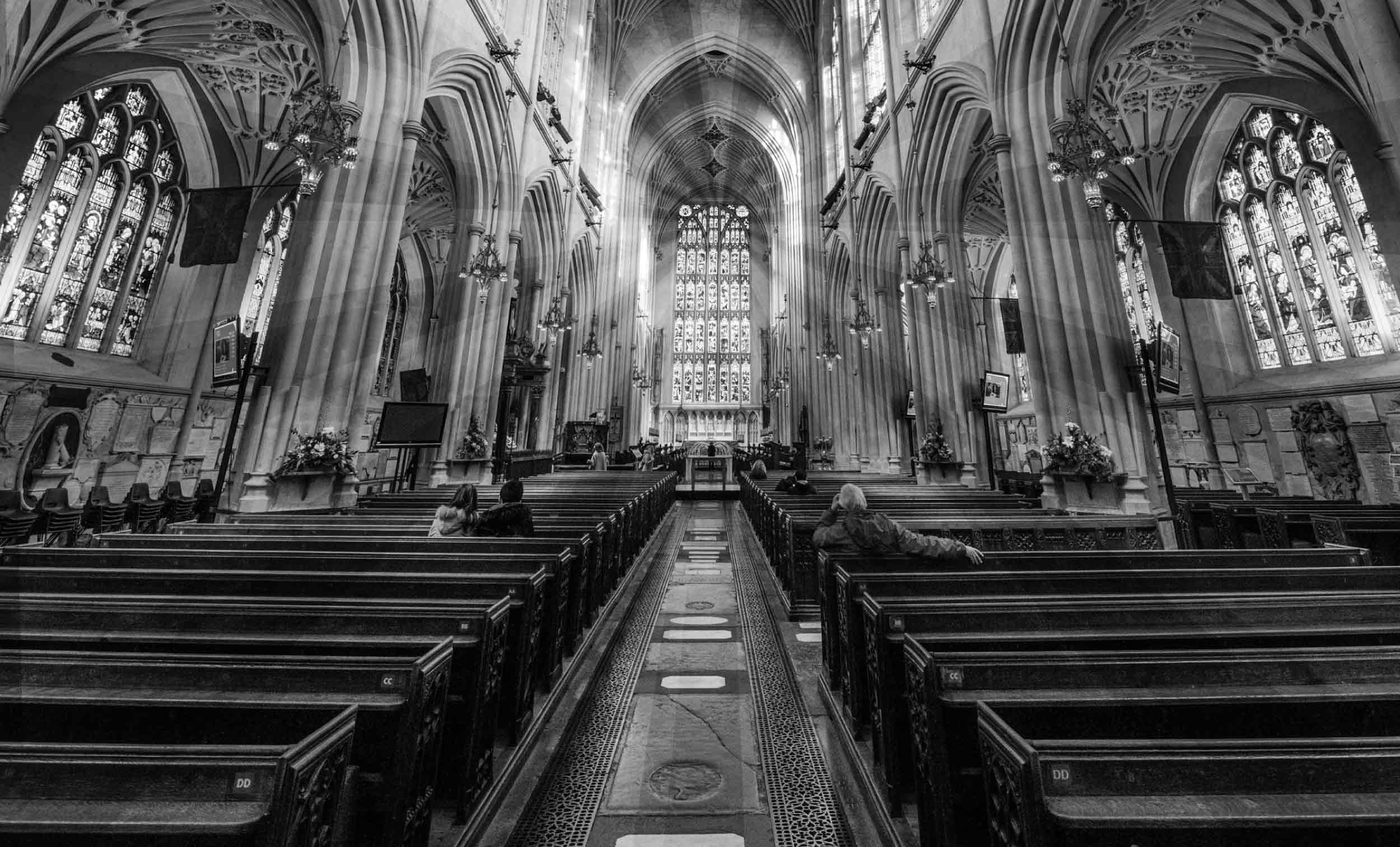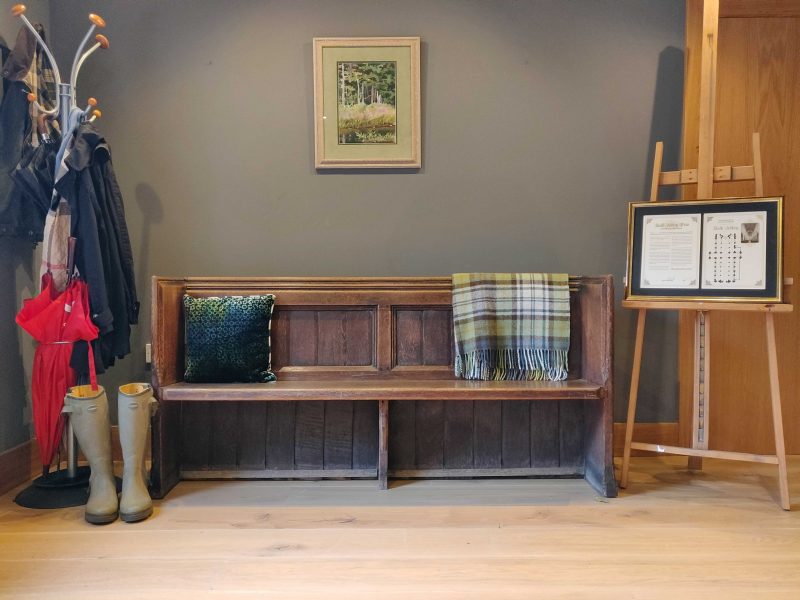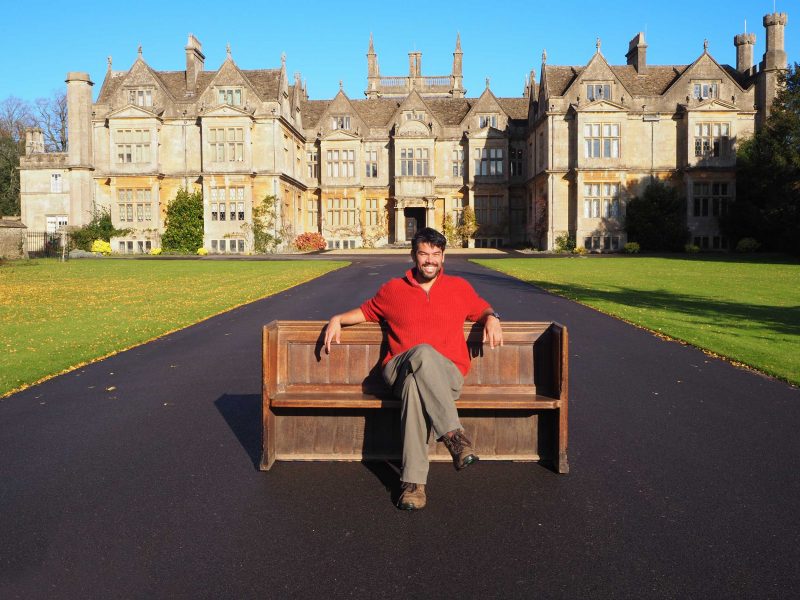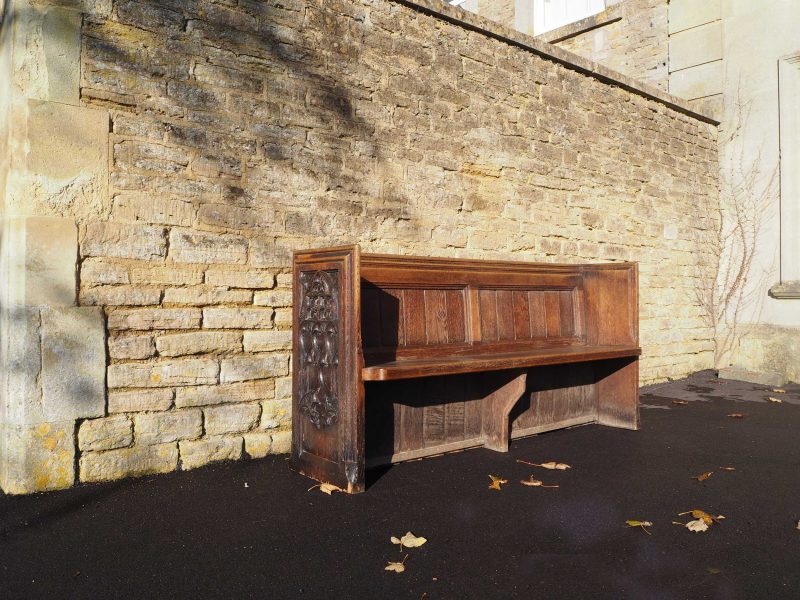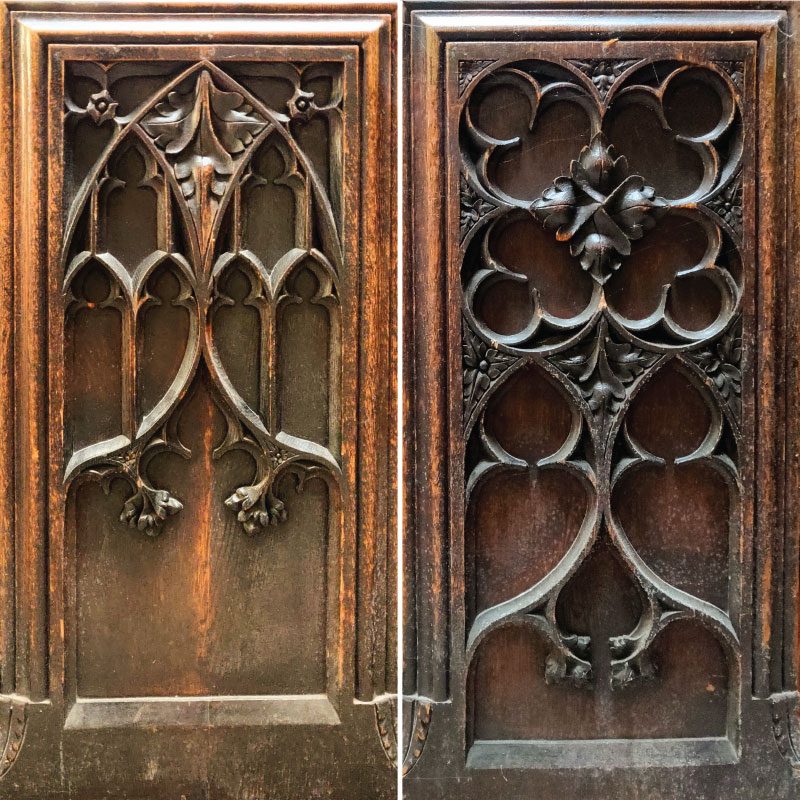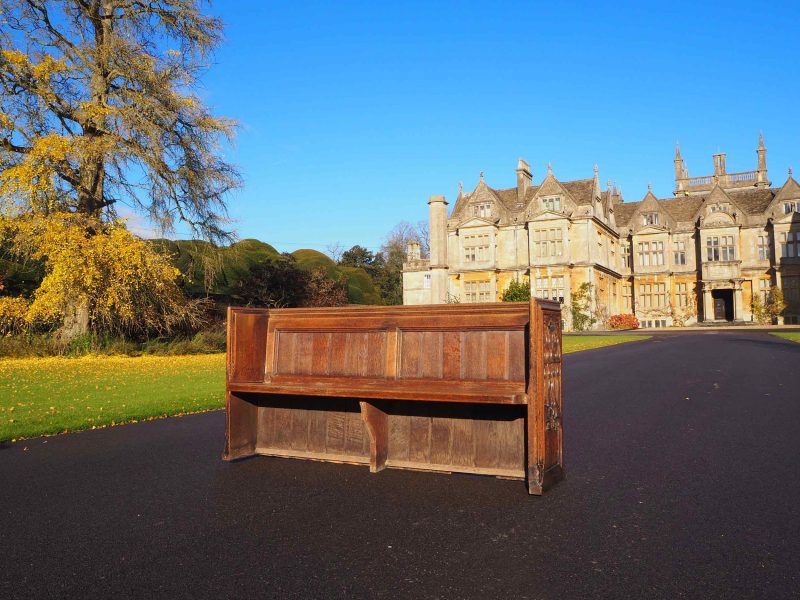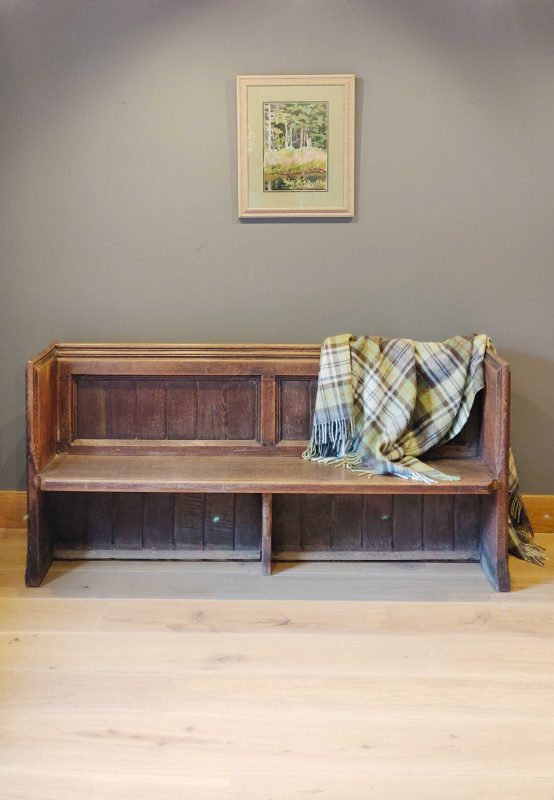A truly unique piece of art
Sir George Gilbert Scott’s designs for his Bath Abbey Pews were intended to reflect the majesty and significance of
the building in which they would be installed.
Each piece is hand-made, crafted from English Oak and finished with two, unique, custom designs on each end of the
pew. The designs reflect a number of influences on Sir Gilbert Scott and include a number of designs taken from
within the abbey and based upon its stonework, memorials and stained glass windows.
Each piece was crafted, installed and remained in place until its removal between 2015 and 2018. Each is a unique
treasure and memorial to a great Abbey, a great designer and a great story.
Order Now
A unique piece of art
Sir George Gilbert Scott’s designs for his Bath Abbey Pews were intended to reflect the majesty and significance of
the building in which they would be installed.
Each piece is hand-made, crafted from English Oak and finished with two, unique, custom designs on each end of the
pew. The designs reflect a number of influences on Sir Gilbert Scott and include a number of designs taken from
within the abbey and based upon its stonework, memorials and stained glass windows.
Each piece was crafted, installed and remained in place until its removal between 2015 and 2018. Each is a unique
treasure and memorial to a great Abbey, a great designer and a great story.
Order Now
Own a unique piece of history from the heart of Bath Abbey
Bath is one of the earliest centres of Christianity in Britain. Founded in 675, on the site of Roman Bath’s earlier
temple complex, Bath Abbey was one of the earliest and most important religious institutions in England and
remained so for much of the Medieval era.
In 973, the Abbey was chosen as the venue for the coronation of Edgar – the very first ‘King of England’. Edgar chose
Bath Abbey for its splendour, significance and its Roman Imperial connections.
His coronation ceremony heralded a
new era of prosperity and peace for the English people, and the dramatic ceremony was an awe-inspiring event,
designed to reflect the greatness of Edgar’s Kingship, his commitment and closeness to God, and the might and
ambitions of his Kingdom. Edgar’s Coronation ceremony has formed the basis for every English coronation since.
Learn more
Following a period of neglect from the 1500s onwards, Bath Abbey was restored to its former glory in the 1860's, by one of the world’s greatest Victorian Gothic architects, Sir George Gilbert Scott. Charged with completing the Abbey, which had been left half-finished as a result of the English Reformation, Sir George installed the Abbey’s fan-vaulted ceiling and installed a new gothic-inspired interior filling the floor space with new, individually designed, hand-crafted oak pews.
These unique masterpieces remained inside the Abbey until 2014-2018 when they were removed as part of the Abbeys ‘Footprints Project’ – a project to reveal the unique stone memorials beneath the pews, install thermal heating and restore the Abbey to a more authentically medieval aesthetic.
As a result, you can now own a fabulous, remarkable and unique piece of England’s history.
Own a unique piece of history from the heart of Bath Abbey
Bath is one of the earliest centres of Christianity in Britain. Founded in 675, on the site of Roman Bath’s earlier
temple complex, Bath Abbey was one of the earliest and most important religious institutions in England and
remained so for much of the Medieval era.
In 973, the Abbey was chosen as the venue for the coronation of Edgar – the very first ‘King of England’. Edgar chose
Bath Abbey for its splendour, significance and its Roman Imperial connections.
His coronation ceremony heralded a
new era of prosperity and peace for the English people, and the dramatic ceremony was an awe-inspiring event,
designed to reflect the greatness of Edgar’s Kingship, his commitment and closeness to God, and the might and
ambitions of his Kingdom. Edgar’s Coronation ceremony has formed the basis for every English coronation since.
Learn more
Following a period of neglect from the 1500s onwards, Bath Abbey was restored to its former glory in the 1860's, by one of the world’s greatest Victorian Gothic architects, Sir George Gilbert Scott. Charged with completing the Abbey, which had been left half-finished as a result of the English Reformation, Sir George installed the Abbey’s fan-vaulted ceiling and installed a new gothic-inspired interior filling the floor space with new, individually designed, hand-crafted oak pews.
These unique masterpieces remained inside the Abbey until 2014-2018 when they were removed as part of the Abbeys ‘Footprints Project’ – a project to reveal the unique stone memorials beneath the pews, install thermal heating and restore the Abbey to a more authentically medieval aesthetic.
As a result, you can now own a fabulous, remarkable and unique piece of England’s history.
A World-famous Victorian Designer
Bath Abbey’s Pews were designed by one of the worlds’ greatest Victorian-era Gothic Revival Architects, Sir George
Gilbert Scott
Sir George Gilbert Scott was the leading architect of the Gothic Revival, a man with an incredible passion for
restoring and celebrating the lost gothic styles and skills of old, and possessed of enormous energy, enthusiasm and
influence.
Alongside Pugin and Ruskin, Gilbert Scott is one of the most prolific and most influential Gothic Revivalists of the
1800s.
Learn more
He designed and restored over 800 buildings, including many iconic buildings such as the Midland Grand
Hotel at St Pancras Station, the Albert Memorial, and the Foreign and Commonwealth Office, all in London. He also
designed St Mary's Cathedral, the University of Glasgow primary building, St Mary's Cathedral in Edinburgh and
Christchurch Cathedral in Christchurch, New Zealand.
Knighted in 1872, Scott became President of the Royal Institute of British Architects in 1873. he died in 1878 and was
buried in Westminster Abbey. His work is celebrated around the world and features as part of the Victoria & Albert
Museum’s permanent collection in London.
A World-famous Victorian Designer
Bath Abbey’s Pews were designed by one of the worlds’ greatest Victorian-era Gothic Revival Architects, Sir George
Gilbert Scott
Sir George Gilbert Scott was the leading architect of the Gothic Revival, a man with an incredible passion for
restoring and celebrating the lost gothic styles and skills of old, and possessed of enormous energy, enthusiasm and
influence.
Alongside Pugin and Ruskin, Gilbert Scott is one of the most prolific and most influential Gothic Revivalists of the
1800s.
Learn more
He designed and restored over 800 buildings, including many iconic buildings such as the Midland Grand
Hotel at St Pancras Station, the Albert Memorial, and the Foreign and Commonwealth Office, all in London. He also
designed St Mary's Cathedral, the University of Glasgow primary building, St Mary's Cathedral in Edinburgh and
Christchurch Cathedral in Christchurch, New Zealand.
Knighted in 1872, Scott became President of the Royal Institute of British Architects in 1873. he died in 1878 and was
buried in Westminster Abbey. His work is celebrated around the world and features as part of the Victoria & Albert
Museum’s permanent collection in London.
Own your very own piece of England’s story.
We’re offering you the opportunity to own your very own piece of England’s story. Alongside the chance to acquire a unique pew that once formed part of one of England’s greatest collections of pews, you will also receive a Certificate of Provenance, signed and dated by the Rector of Bath Abbey, Rev. Guy Bridgewater and stamped with the official Bath Abbey Stamp.
Finally, along with the certificate of provenance, you’ll receive a plan of the Abbey with the approximate location of your pew marked on it (based on the original, partially worn plan of the pews). See images below.
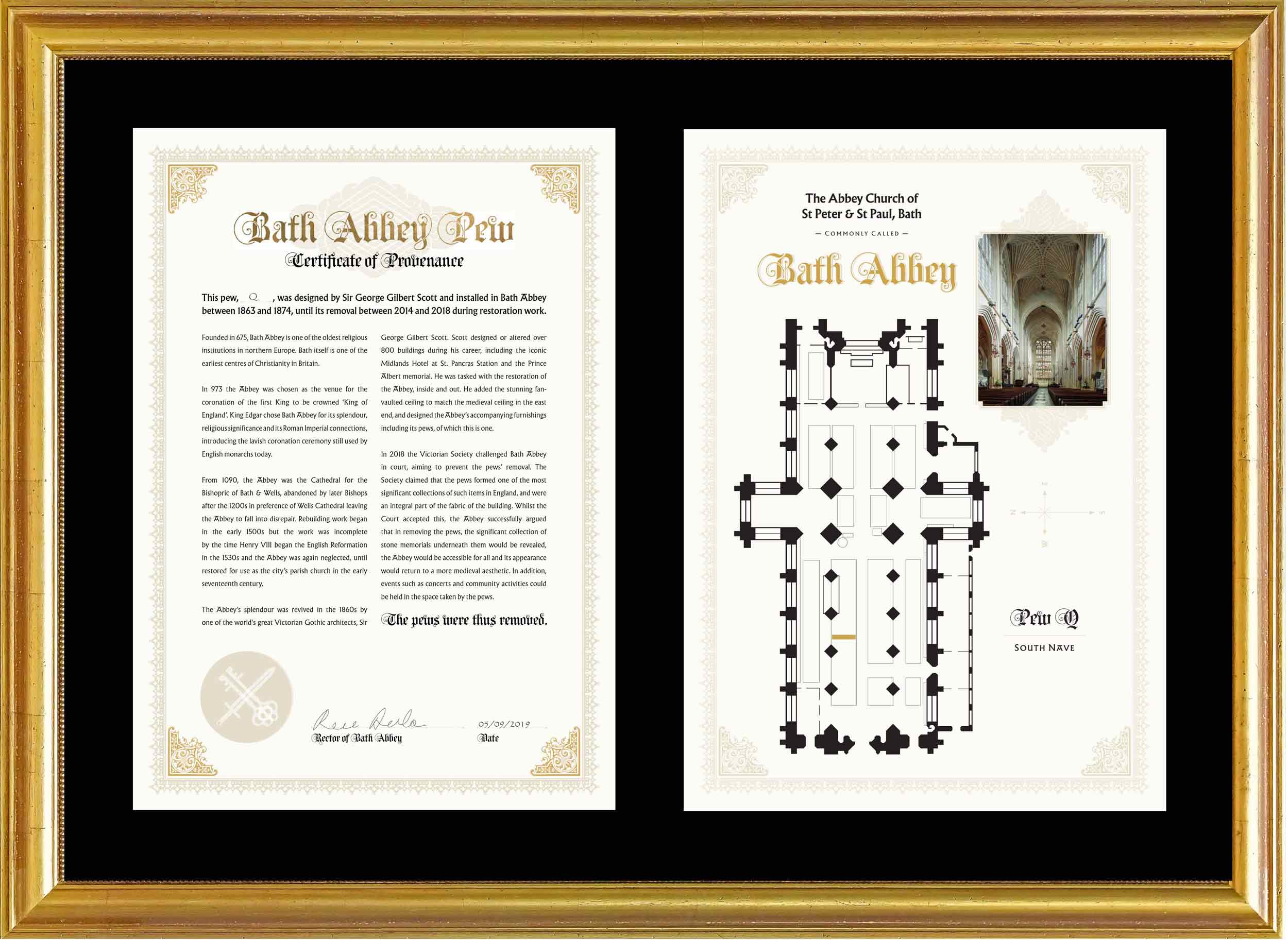
Limited release
Please get in touch below if you'd like to find out more about owning a Bath Abbey Pew.
All information provided is held confidentially and securely and will not be shared with any third parties.
Featured In...






